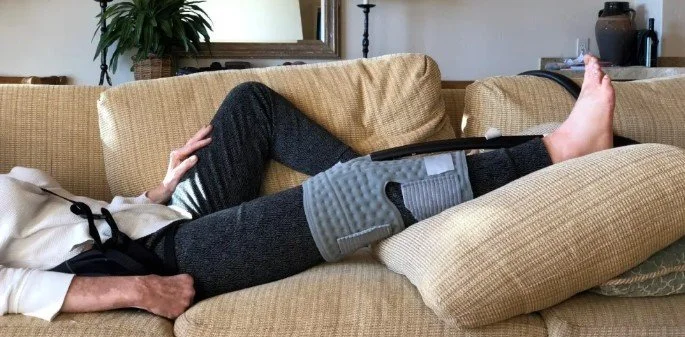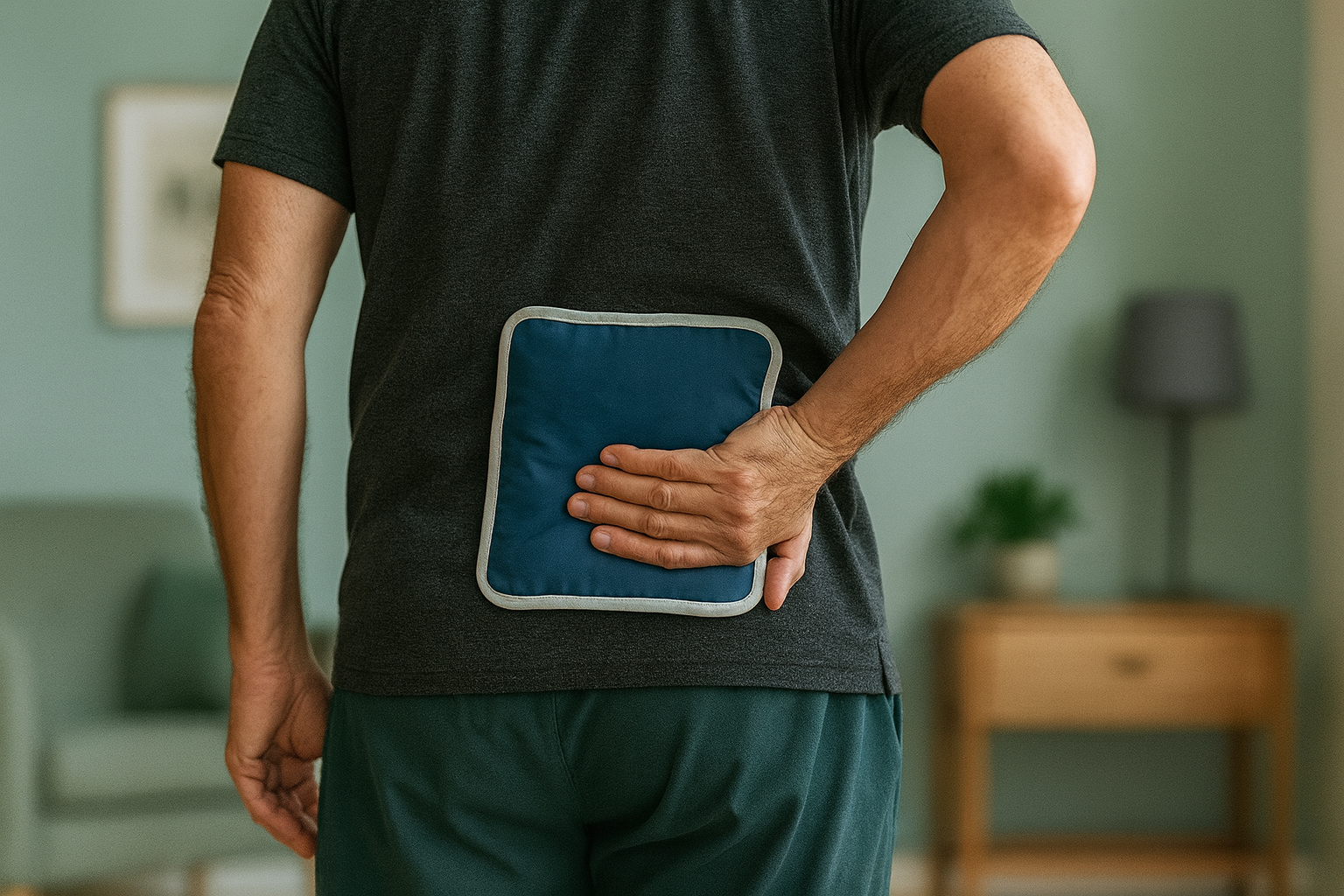Ice vs Heat for Injury: A Physical Therapist’s Guide to Pain & Swelling Relief
✅ Introduction: Ice vs Heat for Injury: When to Use Each
“Should I use ice or heat for this?”
If you’ve ever nursed a swollen ankle or woken up with a stiff, aching back, chances are you’ve asked this exact question. It’s one of the most common things patients ask me in the clinic, and for good reason. The advice online is often conflicting. It’s confusing when everyone around you gives different advice. Patients tell me they’ve tried both, sometimes on the same day, without knowing if it’s helping or hurting.
The truth? Both ice and heat can be useful—but they serve different purposes. Knowing when and how to use each one can make a noticeable difference in how quickly you recover and how comfortable you feel along the way.
In this guide to ice vs heat for injury, we’ll break down what each one does, how to use them safely, and how to make the right call depending on your symptoms and stage of healing.
🧩 Understanding What Ice and Heat Do
Let’s start with what’s actually happening when you apply cold or warmth to your body.
❄️ Ice (Cryotherapy)
Ice works by slowing things down. It reduces blood flow to the area, dampens nerve activity, and cools the tissue temperature. This is ideal in the early stages of an injury when swelling and inflammation are high.
Reduces acute swelling
Decreases local tissue metabolism
Helps numb sharp or throbbing pain
Can limit secondary tissue damage in early phases
Most effective in the first 24–72 hours, but may also help calm flare-ups later in recovery.
🔥 Heat (Thermotherapy)
Heat, on the other hand, is about warming things up. It increases circulation, improves tissue elasticity, and can help loosen up stiff joints or tense muscles—perfect for chronic aches or stiffness that makes movement difficult.
Increases blood flow and oxygen delivery
Helps relax tight or spasming muscles
Improves mobility when used before movement
Useful for chronic pain or stiffness
Avoid in the first 72 hours if swelling is present
🧠 Simple analogy:
“Ice calms tissues down. Heat prepares tissues to move.”
Neither heals you directly—they’re tools to manage symptoms and optimize recovery.
🔄 When to Use Ice vs Heat
Choosing between ice and heat depends on your symptoms, not just your diagnosis. Here’s how I usually break it down for patients:
✅ Use Ice When:
You have a new injury (within 24–72 hours) — such as a rolled ankle, sore knee, or swollen joint. Cooling the area helps limit inflammation and reduce pain.
Your symptoms are hot, swollen, or throbbing.
You just finished a workout and something flared up — icing can calm down that inflammatory response.
There’s visible swelling or bruising.
🧊 Example: After rolling your ankle, apply ice for 15 minutes every few hours during the first two days. This helps reduce swelling and discomfort so you can begin gentle movement sooner.
✅ Use Heat When:
You’re dealing with stiffness or tightness — like low back pain, old shoulder aches, or morning stiffness from arthritis.
You want to warm up tissues before stretching or movement.
You have muscle tension or spasms — warmth can help relax overactive muscle patterns.
It’s not a new injury and there’s no active swelling.
🔥 Example: If your lower back feels tight every morning, applying a heating pad before you move can improve your range of motion and comfort for the rest of the day.
📌 Quick Tip: Not sure which to choose?
👉 If it’s new and swollen, use ice.
👉 If it’s old and stiff, use heat.
👉 If symptoms persist, check in with your physical therapist/physician
📋 How to Apply Ice and Heat Safely
Correct use is just as important as choosing the right one.
Ice Guidelines:
Use for 10–20 minutes at a time.
Always place a thin barrier (like a pillowcase or towel) between the ice pack and your skin.
Don’t reapply until the skin returns to normal temperature—usually 1–2 hours.
Stop immediately if you feel burning, numbness, or extreme discomfort.
Heat Guidelines:
Keep it warm, not hot. Test on your inner wrist first.
Apply for 15–20 minutes max.
Never use heat on open wounds, areas of numbness, or new post-surgical incisions.
Moist heat (e.g., a warm shower or damp towel) can be more effective than dry heat.
⚠️ Safety Rules for Both:
Never sleep with a heat or ice pack on.
Don’t use directly on compromised skin (e.g., bruises, wounds, surgical sites).
Always inspect the skin after use.
⚠️ When to Avoid Ice or Heat
There are situations where neither modality is appropriate:
Poor circulation or vascular disease (especially in the legs).
Open wounds or surgical incisions (especially when using heat).
Loss of sensation — if you can’t fully feel the area (e.g., after stroke or with diabetic neuropathy), the risk of skin injury rises.
Active infections or significant swelling with redness and warmth — consult a medical provider.
Immediately after surgery — while ice is often used early on, it should be under guidance from your surgeon or PT.
🧠 Common Myths About Ice and Heat
Let’s bust a few persistent misconceptions:
❌ “Always ice after exercise.”
✔️ Not if there’s no inflammation or swelling. In many cases, your body benefits more from movement or active recovery.
❌ “Heat will make everything worse.”
✔️ Not true if the issue is stiffness, not swelling. Heat can make you more mobile and comfortable.
❌ “More is better.”
✔️ Overusing ice can slow healing. Overheating can burn skin or worsen inflammation.
❌ “I can use both at the same time.”
✔️ Contrast therapy (alternating ice and heat) has niche uses but isn’t a general rule for all injuries.
❌ “Once swelling starts, I should keep icing until it’s gone.”
✔️ Over-icing doesn’t speed recovery. It’s about moderation and balance.
A Simple Decision Guide
Here’s a quick breakdown to help you decide in the moment:
👉 Still unsure? Reach out to your PT. A skilled clinician can assess your condition and guide you to the best solution.
📚 Supporting Research
Bleakley CM, Costello JT. Do thermal agents affect range of movement and mechanical properties in soft tissues? Arch Phys Med Rehabil. 2013;94(1):149–63.
Nadler SF, et al. Continuous low-level heat wrap therapy provides more efficacy than ibuprofen and acetaminophen for acute low back pain. Spine. 2002;27(10):1012–1017.
Hubbard TJ, Denegar CR. Does cryotherapy improve outcomes with soft tissue injury? J Athl Train. 2004;39(3):278–279.
Malanga GA, Yan N, Stark J. Mechanisms and efficacy of heat and cold therapies for musculoskeletal injury. Postgrad Med. 2015;127(1):57-65. doi:10.1080/00325481.2015.992719
Written by Christian Hill, PT, DPT, CDNT – Licensed Physical Therapist with over 10 years in orthopedic rehab.
This article is for educational purposes only and is not a substitute for professional medical advice. Always consult with your healthcare provider before beginning any new rehabilitation or treatment plan.


